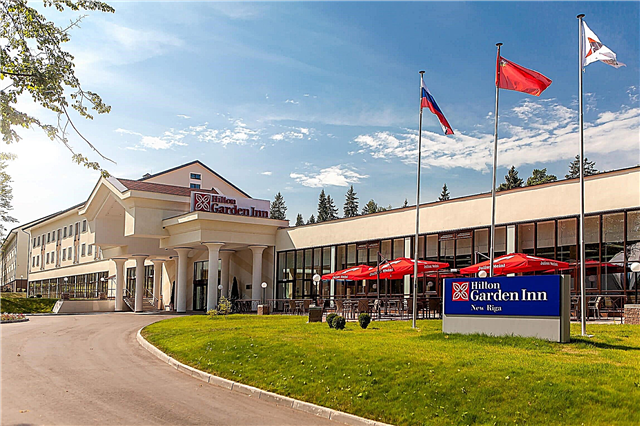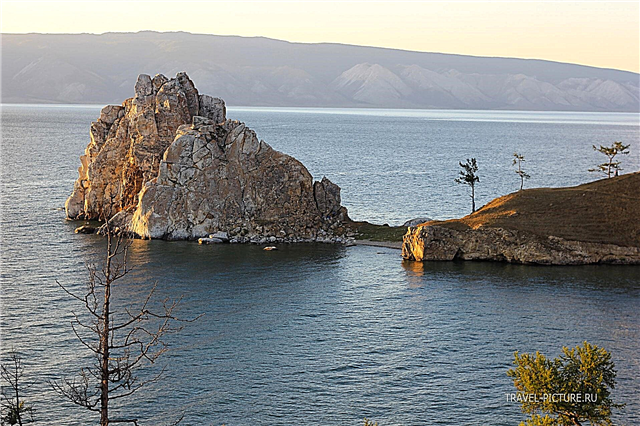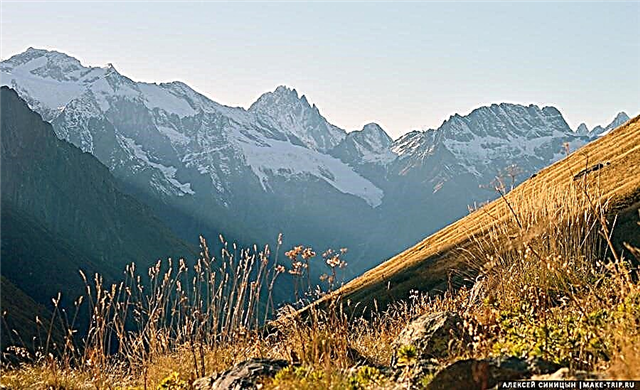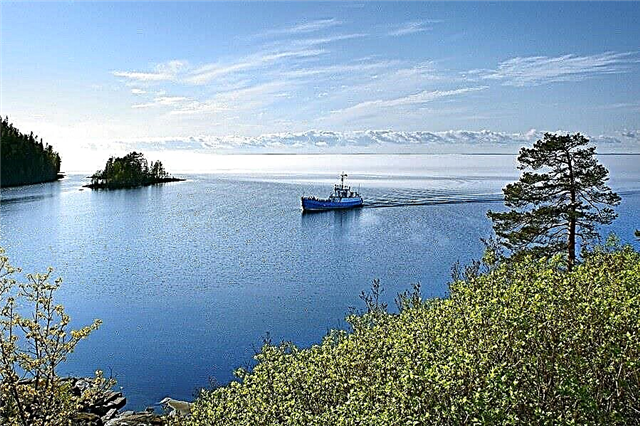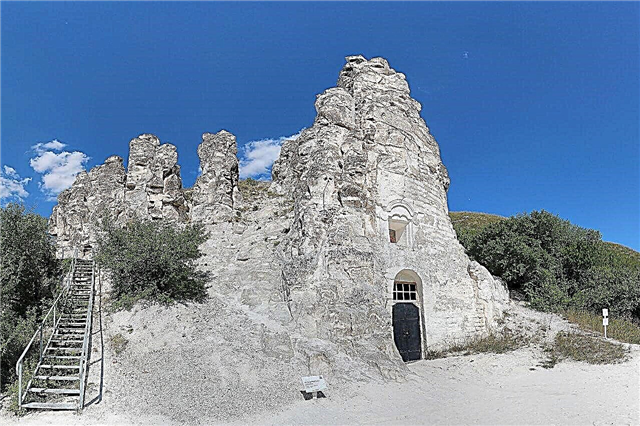"Divnogorye" is the most popular attraction of the Voronezh region. It brings together several tourist destinations. Lovers of nature, archeology, Orthodox pilgrims, families with children come here.
Cretaceous deposits have largely shaped the appearance of Divnogorye. Temple complexes are carved right in the outliers. The caves that have not been fully explored deserve special attention. In addition, the museum staff recreated the past appearance of these lands in various expositions, giving visitors the opportunity to visit the early Middle Ages. In 2020, Divnogorye was included in the list of candidates for inclusion in the UNESCO World Heritage List.
What to see and what to do in Divnogorie?
List of the most interesting and beautiful places in the museum-reserve.
Church of the Sicilian Icon of the Mother of God
This is a cave church in Big Divas. The Orthodox Church is entirely hollowed out inside the chalk outlier. An underground passage surrounds the entire church. The second floor was occupied by monks in the past. Inside, the temperature is approximately the same all year round, so it is cool here in summer, and in winter, even in snowstorms, it is relatively warm. A staircase has already been made to the side of the church, allowing you to climb a 180-meter mountain and explore the surroundings.

Recommended: the main attractions of the Voronezh region.
Church of the Nativity of John the Baptist
This is a cave church in Malye Divy. Included in the complex of the Holy Dormition Monastery. It was first mentioned in the middle of the 17th century. White walls and window openings completely merge with the chalk rock. Therefore, the blue doors are visible from afar. There is also a gallery with two chapels. One of the outliers standing next to it will receive the name of the belfry for its shape. You can get inside through its doorway, but climbing to the upper tier is prohibited due to the danger of collapse.

Divnogorsk Assumption Monastery
Founded presumably in 1650 by monks who arrived from the Hetmanate. In Soviet times, the monastery was plundered. Later, a rest house and a hospital were opened in its place. The land was returned to the dioceses in 1997, although the first divine services were held back in 1991. Restoration work is still underway. The home church of the monastery was consecrated in 2019. The monastery includes not only the cave temple, but also the courtyard in Maslovka.

Divnogorsk courtyard
The ethnographic exposition acquaints visitors with the life of the Russians and Ukrainians who inhabited the borderlands in the 17th century. Visitors will be told what a towel is, how they ironed linen in the past, and they will clearly demonstrate many rare household items of the past centuries. Folk festivals, fairs, master classes of artisans, performances of musical and dance groups are held on the basis of the courtyard.

"Mayack Fortress - a look into the past"
An interactive model of the monument, archaeologists located in the courtyard "Divnogorya". The proportions are 1 to 87 relative to the actual size of the fortress. The layout includes the following objects: the fortress itself, the Mayatsky cape with the adjoining Don and Tikhaya Sosna rivers, diva outliers that no longer exist at the moment, household buildings of that time. In addition, carts are moving, bonfires are smoking, and there are many figures of people and animals. The installation was opened in 2015.

Mayack fortress
A massive white-stone building stood on the high bank of the Don. The height of the walls reached 6 meters, and the depth of the moat exceeded 3 meters. Inside, in addition to the citadel, there were household and residential buildings. Now on the site of the fortress there are only ramparts up to 2 meters high. They surround a site measuring 80 × 95 meters. During excavations here, archaeologists have found runic inscriptions that have not yet been deciphered.

Archaeological Park "From nomads to cities"
Reconstructed site of a settlement of the 9th-10th centuries. The archaeological park was created based on the research materials of the Mayatsky settlement. Copies of dwellings of Alans and Bulgarians, a craft workshop, household semi-dugouts are the basis of the exposition. Visitors are offered to plunge into the early Middle Ages, learn the customs and life of local peoples, hold recreated tools in their hands, see how the craftsmen work.

Exposition "Childhood of the Earth"
The presentation of the open-air project took place in 2015. The purpose of the exposition is to attract a young audience and families with children. With illustrative examples, "Childhood of the Earth" tells about the evolution of our planet, explains many of the phenomena and laws of the universe. The interdisciplinarity of the exposition is very important: within the framework of one excursion paleontology, geology, art history, philosophy, and pedagogy converge. Visits are possible from May to September.

Divnogorsk canyon
An earthen section that looks especially impressive due to the chalk deposits. On the slopes, remnant ridges of various shapes were formed. It is forbidden to go down to the bottom of the canyon: there is a danger of collapse, and there are also a lot of vipers among the vegetation. The remains of a complex of pottery workshops of the early Middle Ages were found nearby. The canyon ends near the Don floodplain, expanding significantly before the cliff.

Pottery workshops
They were located near the Divnogorsk canyon. Now the complex is already hardly distinguishable on the ground. During the excavations, the remains of 4 pottery workshops and the same number of pottery kilns were found. They were semi-dugouts with a pitched roof. Archaeologists have discovered fragments of pottery products, as well as whole jugs, pots, mugs, and a blacksmith's mark. Items added to the "Divnogorye" exposition.

Divnogorsk spring
On the bank of the Quiet Pine, there is a spring, the waters of which are consecrated. Although it is surrounded by a practically untouched forest belt, the territory has been developed right next to the natural monument. Two small covered areas are tiled, a descent to the ablution font is made, benches are installed. Water flows out of the well through a gutter. Access to the source is free. Immediately after the flood, the water must not be drunk: it clears up after about 3 weeks.

"Divnogorie 9" and "Divnogorie 1"
These archaeological sites have no analogues in Russia. "Divnogorye 9" was discovered in 2007. Excavations revealed 6 layers of finds, including 7,000 horse bones and stone tools that were used to butcher the carcasses. In 2008, Divnogorye 1 was opened, which differs both in its relief and in the level of the cultural layer. Stone tools, the remains of horses and deer were also found here.

Caves "Casemate" and "Ear"
Of the entire cave group "Divnogorya", the cave "Ear" is the least studied. It is located a kilometer from the village of Selyavnoe. Next to it there is a cave-cell "Casemate". Under the ground, passages and tunnels in them diverge in different directions, forming a small breaking network. However, now part of the passages is blocked. Although amateur cavers try to explore the caves, entry is officially prohibited.

Quiet Pine River
The right tributary of the Don flows through the territory of the Belgorod and Voronezh regions. The total length is 161 kilometers. There are several species of fish, but large specimens are almost never found. On the banks there are oak forests, fruit plantations and woodlands. On the territory of the museum-reserve, it carries its waters along a well-developed wide valley. The riverbed is meandering with meanders, stretches and shallow waters.

Don River
It flows through the European part of Russia. The length of the river is 1870 km. The Don plays an important role in regulating the water regime of the vast territory of Divnogorye, including the formation of floodplain landscapes. The river is flat, but with a slight slope. The wide floodplain and winding channel create unique natural views. The current is predominantly slow.The river banks are a popular summer camping spot.



